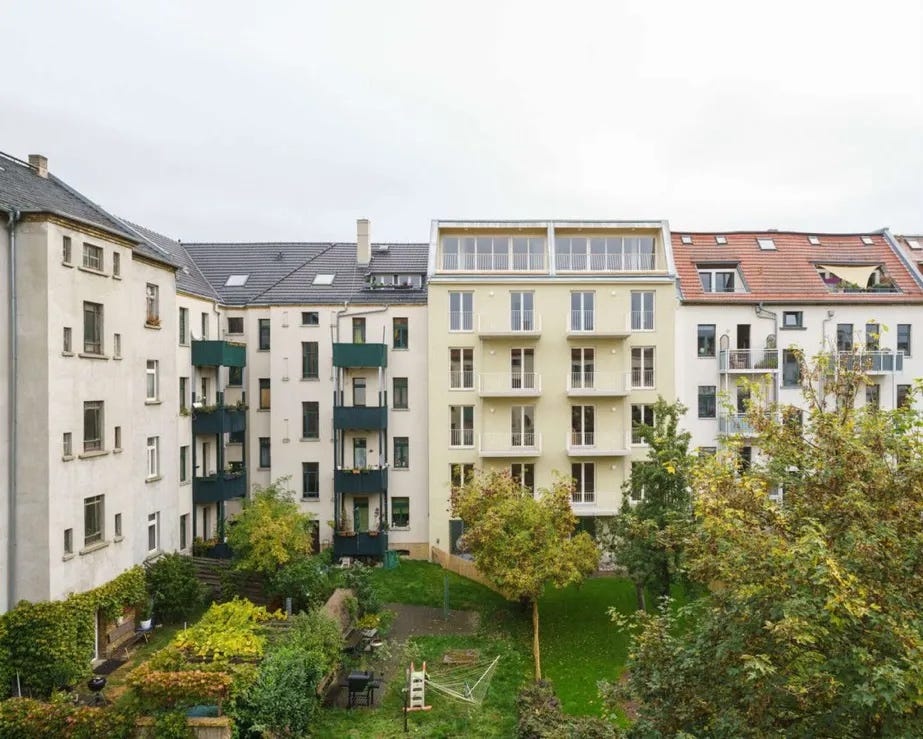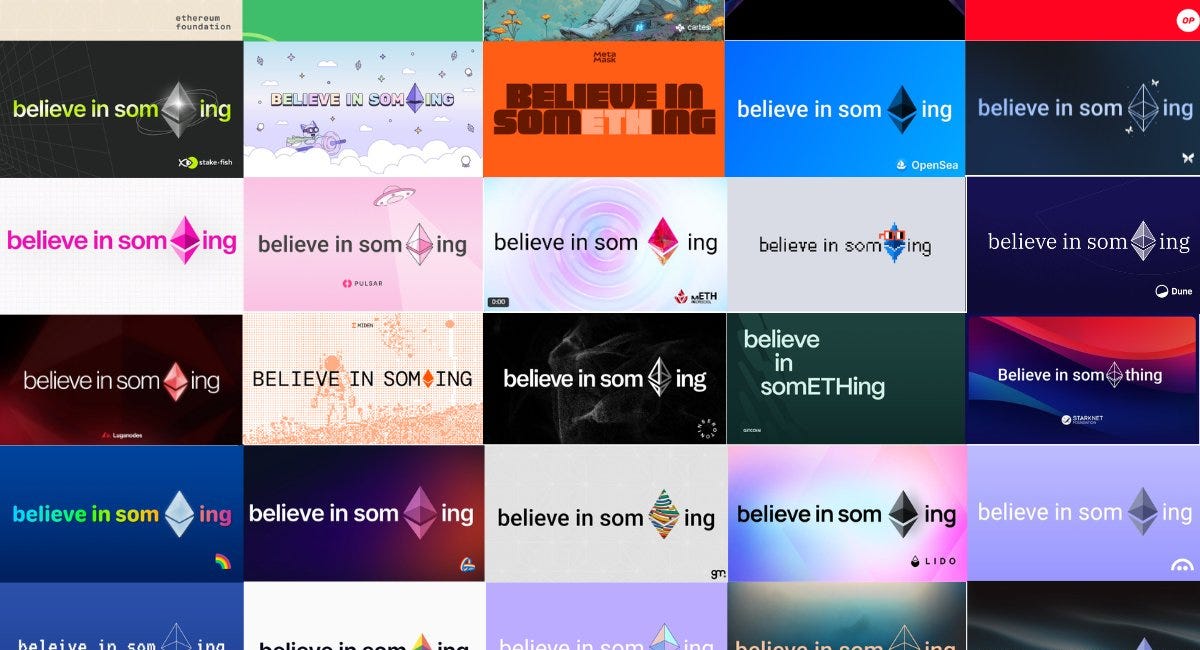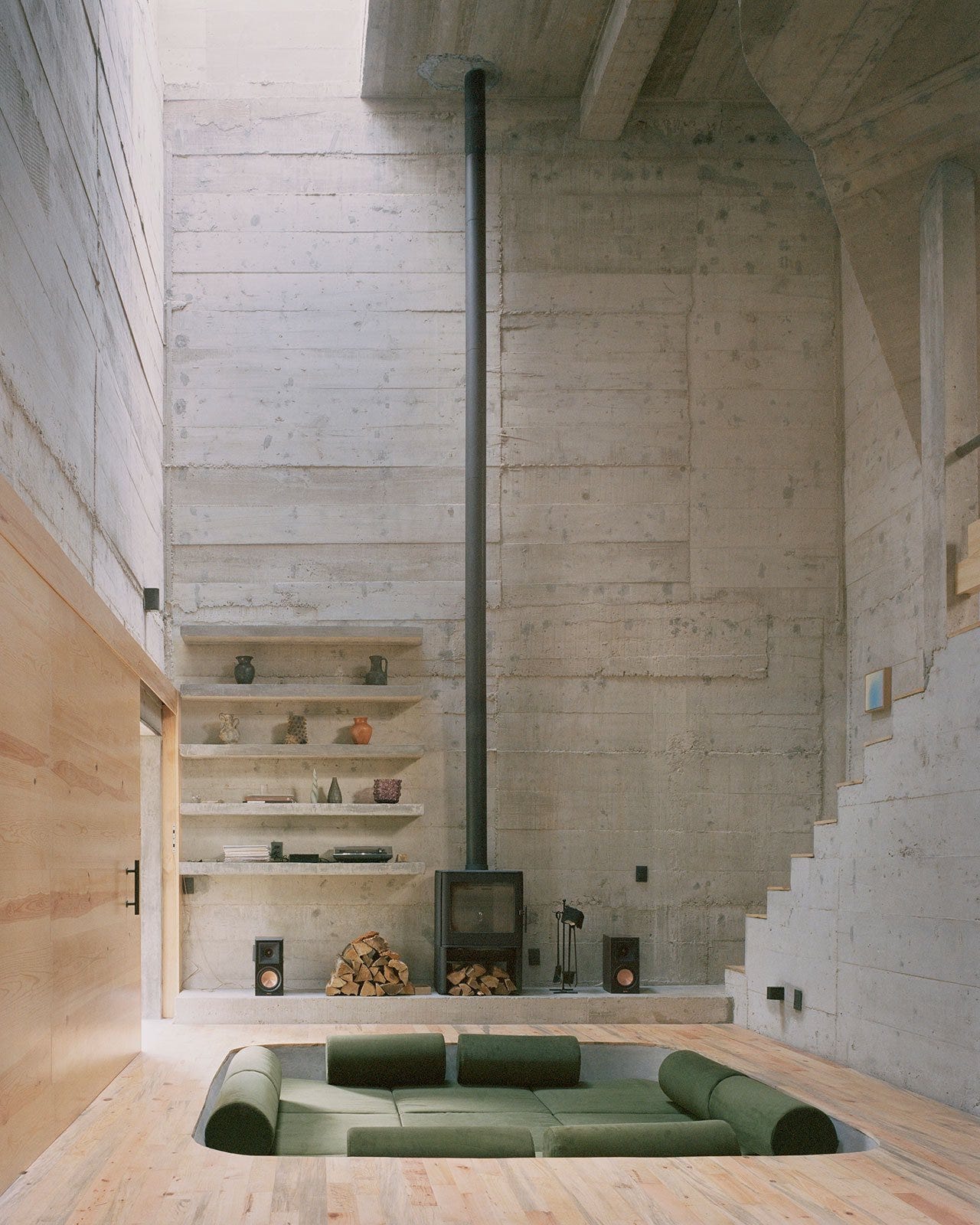Sunday Edition #9 - Building Better Courtyards
Also: A Decade of Ethereum, Getting Artists Paid, and Common Side Effects
Welcome to the Sunday Edition where I share interesting articles and links alongside what I’ve been up to!
Courtyard Blocks
Ever since delving deeper into Barcelona’s superblocks, I’ve been properly pilled on courtyard urbanism. When I visited, I documented how they’re changing the traffic lanes in the city in order to increase green and public space *between* the blocks.
Taking Back Streets: Documenting Barcelona
I love cities. I also love cities that prioritise people over cars. I also love cities that do this in really smart ways that still allows the presence of cars, but deprioritises them. Barcelona is one such city and it’s in the midst of a great re-imagination. I hope it inspires more cities. When I visited it recently for the first time, I took the oppo…
Alicia Pederson has a phenomenal post detailing the differences to how plenty of cities in Europe approach courtyards versus how American mega-developments tend to approach them.
A notable design difference that Alicia surfaced is how apartment building hallways are structured. In Europe, many of these blocks allow front-to-back apartments that both face the street and the courtyard. The only space connecting apartments is a common stairwell. In America, there’s often long hallways that separate apartments to either side, forcing in some sense, people to choose what “light” they prefer and what they wish to see. It’s more like a hotel in America.
All of this speaks to the courtyard block as a powerful tool for multigenerational living and community cohesion. I often talk about building “complete life cycle” cities where people can grow up, raise families, age in place, and stay rooted for generations. European cities have achieved this through centuries of mixed-use, small-lot perimeter blocks. American cities, by contrast, have always struggled to maintain population, and their failure to build amenity-rich, family-friendly density has pushed population and revenue to sprawling suburban counties.
I’d love to see more perspective on Asian and Middle-Eastern courtyards! Great substack to subscribe to. :)
A Decade of Ethereum
I wrote down some thoughts this week on Ethereum turning 10 years old. Lots of mixed thoughts. Enjoy!
A (Sober) Reflection on a Decade of Ethereum
10 years ago, I celebrated the launch of Ethereum with a whiskey and a view of Table Mountain in the background.
Why Artist Can’t Get Paid
Tom Beck nails a lot of my sentiments into why being creative today is hard. A key element is that because media consumption is social and technology has increased access, it just means that all media compete against each other on a far larger scale.
Consumption of creative work has a social element. Everyone wants to be consuming the same thing. It's more fun that way, less lonely. If everyone is reading the same book, that book's sales shoot into the stratosphere. The rest are left with crumbs.
+
Technology has created a historical pattern, where art moves from local to national to global. Before recorded music, you could only listen to music live. This meant that local musicians could serve local markets. The introduction of recording music technology, however, allowed a few elite performers (like Enrico Caruso) to reach unprecedented audience sizes.
+
The central paradox at the heart of the creator economy is that it is easier than ever to create and distribute content, but harder than ever to build a sustainable creative career. Trying to solve the problem with digital platforms is like trying to put out a fire with a flamethrower.
I’m just YES-ing throughout this entire essay.
I’ve been quite an advocate of touch grass over the years, but I think if there’s a solution, it’s that. It’s revaluing local connections as primary again versus digital connections. Downwind of that is that local musicians, writers, artists, creatives, see prominence. In some sense, I think this touch grass trend will continue as an anti-algorithm pendulum swing also borne from AI job loss into community-as-a-service jobs. Some of it will happen naturally, but I think there’s some other needle that has to drop besides doing offline clubs. Maybe, it’s ultimately some synergy.
Brutalist Cabin
Who wants to listen to Quadeca’s latest album in here with a glass of red wine? The Alferes House in Mexico. Hell yeah.
What I’ve Been Up To
🕹 Gaming - Donkey Kong Bananza
Still enjoying playing this. It’s not very more-ish, but still just great and fun platforming. It keeps it fresh as it continues. Nice way to unwind.
📺 Watching - Common Side Effects
Wow. I really did not anticipate the show being this good. Come for the great animation, stay for the compelling ensemble cast of lovable weirdos and engaging plot. So glad this is getting a season 2! Now, if only Scavenger’s Reign would also get a season 2!
✍️ Writing - Querying Novel #2
Still sending out query letters. Got my first rejection this week. Which is at least *some* movement. It’s quite a slow process. I understand why authors might consider spending the time and resources on querying on just actually self-publishing and promotion. But, that’s ultimately part of the goal with this book: to learn.
📚 Reading - A Visit from the Goon Squad by Jennifer Egan
I’ve been thinking about what’s next with my writing. There’s a few avenues from here I want and could explore: another novel, more short stories (as both leaning into experimental writing and practice), screenwriting, animation, RPG writing (think Disco Elysium). A Visit from the Goon Squad is seen as a successful mix between a short story collection and a novel: interlinking stories, yet disparate. I’m enjoying it.
🏃 Running - Enjoying Cooler Weather!
No wonder it’s been so hard to run in DC. July was the most humid July for several eastern states. Luckily it cooled down this week. Was such a simple joy.
🎶 Listening - Barry Can’t Swim - Like It’s Part of the Dance
I’m still such a sucker for a dance track that can mix ethereal ambience with it. Love this.
That’s it for this week, folks. Hope you get to enjoy a lovely sunset!
Simon






I would love to extend my courtyard coverage to examples from other continents.
There are lots of amazing courtyard forms in Asia, Middle East, Africa, and the Americas. But I haven’t yet seen any examples of the perimeter blocks made up of the small-lot, mixed-use, wide and shallow buildings. I am focused on these because I think they have the best chance of reversing suburban trend of US population.
Would love to get links to examples in other parts of the world of the small lot, mixed use, wide and shallow perimeter blocks!
Thanks for the shout out, Simon! I’m excited to join the urbanism conversation here on Substack—and make the case that courtyard forms can help cities appeal to a broader demographic.